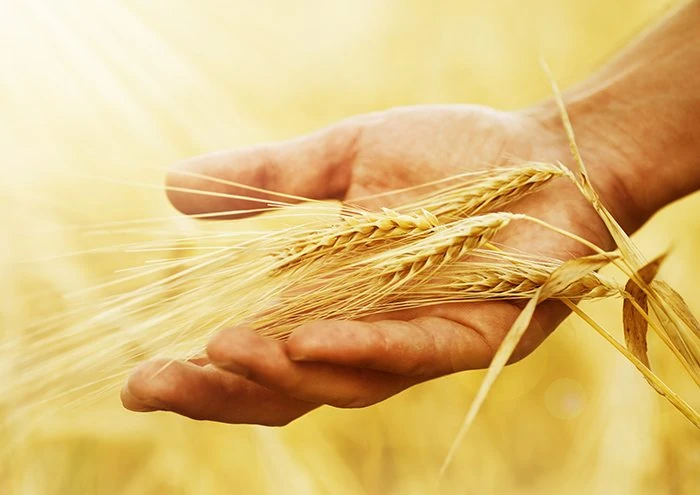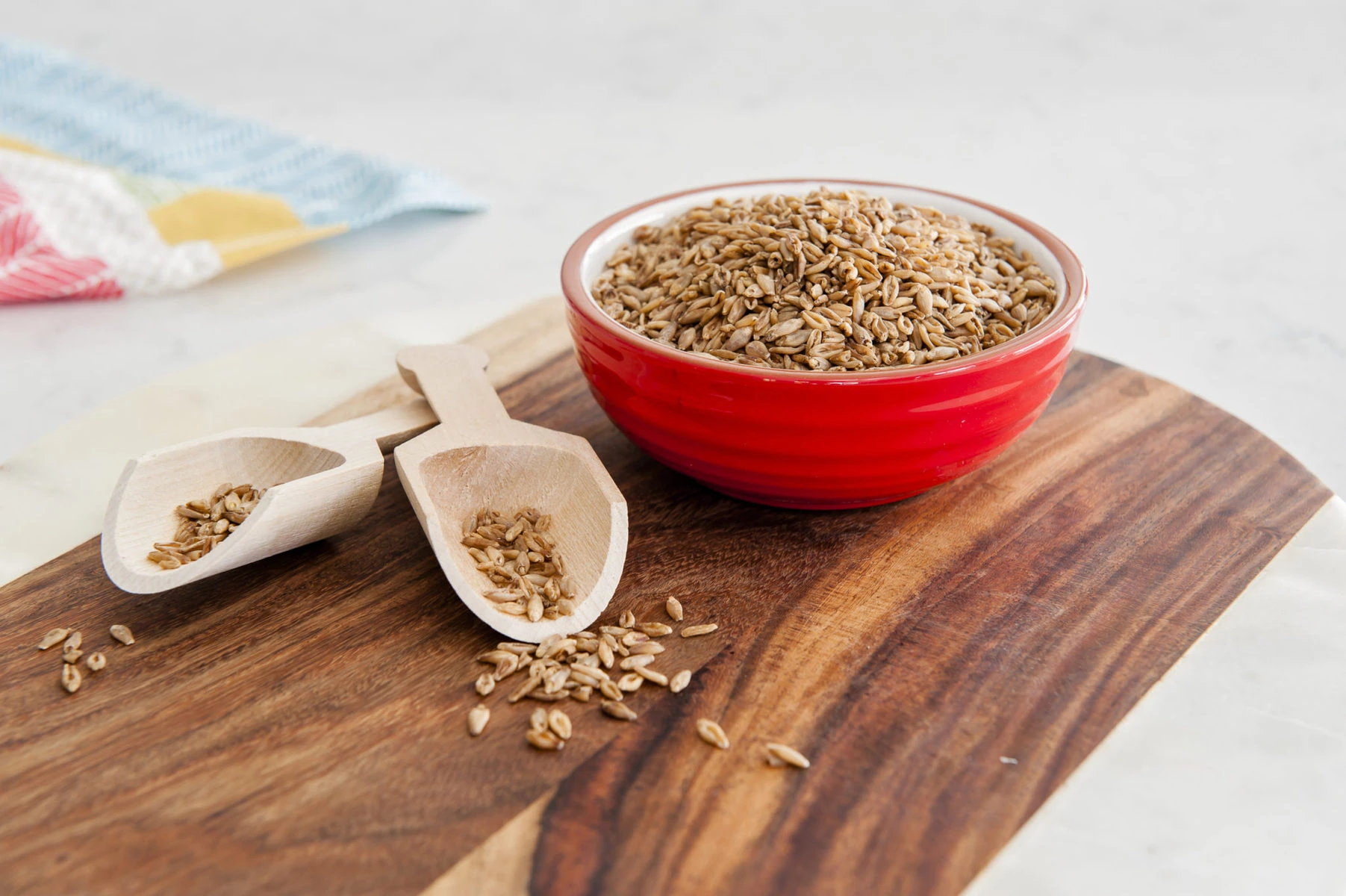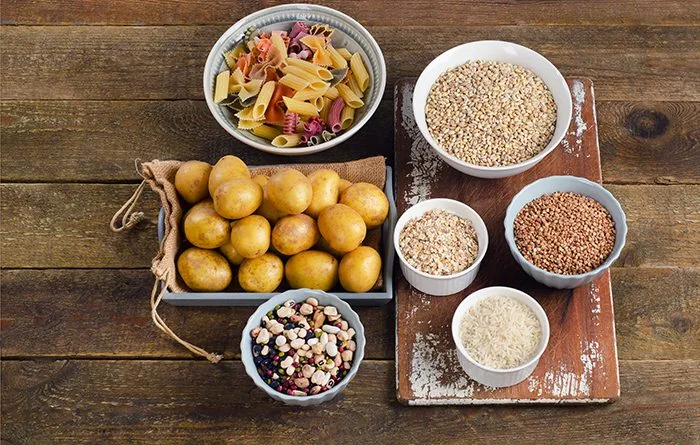By Teri Lichtenstein, Accredited Practising Dietician
Even though our fibre consumption may have increased over the past two decades, the latest data from the Australian Health Survey shows that only 2.2% of our daily energy intake comes from dietary fibre. (1, 2) Most of us know that getting enough fibre is important for ‘keeping regular’, but did you know that getting the right combination of fibre can have wide reaching health benefits?
So what are the different types of fibre and what roles do they play in our health?

Soluble Fibre
Soluble fibre is found in oats, barley, psyllium, lentils, legumes, nuts, seeds, BARLEYMAX® and generally the fleshy parts of some fruits and vegetables. It is called soluble fibre because when it comes in contact with water, it dissolves and then thickens to form a gel. This viscous property slows down the time it takes for food to pass through the digestive system, can lower cholesterol and help regulate blood glucose levels. (3)
Insoluble Fibre
Insoluble fibre is found in the skins and seeds of fruit and vegetables, wholegrains, brown rice, millet, quinoa, BARLEYMAX® and products made with high-fibre ingredients such as cereals and wholemeal/wholegrain breads. Insoluble fibre is also known as ‘roughage’ and is generally resistant to fermentation in the large intestine. It helps bulk up and softens stools, shortens transit time and promotes regular bowel movements. (3)
Resistant Starch
Resistant starch are those starches that are not digested in the small intestine and move into the large intestine where they are fermented by good bacteria to form short chain fatty acids which help keep the large intestine healthy and protect against bowel cancer. Potatoes, pasta and rice that have been cooked and cooled, firm bananas, legumes, wholegrains and BARLEYMAX® all contain resistant starch. In fact, BARLEYMAX® contains approximately 3% resistant starch and has as much as 4 times more resistant starch when compared to other grains such as barley, wheat, oats and rye. (4)
Different properties, lots of health benefits
So how do the different fibres play a role in good health?
Satiety
High-fibre foods tend to have a lower energy density and take longer to eat (think about how much longer it takes to eat a whole apple compared to drinking a glass of apple juice, or how long it takes to eat a dense grainy bread compared to a piece of refined white bread). The delayed-gastric emptying property also contributes to fibre helping keep you fuller for longer. (3) This can also have the additional benefit of assisting with weight management. (5)
Glycaemic Control
The viscosity that occurs when soluble fibre is dissolved in water is thought to make it more difficult for digestive enzymes to access carbohydrate moving through the small intestine, slowing down how quickly carbohydrate is broken down into glucose. The gel is also thought to create a layer on the absorptive surface of the small intestine, slowing down how quickly glucose can then be absorbed into the bloodstream. Resistant starch also plays a role in glycaemic control as the short chain fatty acids produced in the large intestine over time enter the circulation and are thought to decrease fatty acid release and increase glucose oxidation and insulin clearance. All of these things may improve insulin sensitivity. (5) This is good news not only for people who have diabetes, but also means the rest of the population can reduce their risk of developing diabetes by including more fibre in their diet.
Helps lower cholesterol
b-glucan is particular type of soluble fibre that is thought to play a major role in cholesterol lowering. b-glucan is normally associated with oats, but BARLEYMAX® actually has 70% more β-Glucan when compared to oats. (4) Fibre can delay cholesterol absorption in the small intestine. The production of short chain fatty acids when resistant starch is fermented can stop cholesterol production and in keep your bowel movements regular, cholesterol is picked up along the digestive tract and is converted into bile acids and excreted out of the body in a timely manner. (5) Given elevated cholesterol is a risk factor for cardiovascular disease, increased fibre intake is also associated with reducing cardiovascular disease risk. (3, 6)
Lower risk of colorectal cancer
The World Cancer Research Fund International reports that there is now convincing evidence that foods containing dietary fibre, particularly grain and cereal foods, decreases the risk of bowel cancer. (7)
Cancer Council Australia suggests that it is likely that the various types of fibre and their unique properties along with their associated phytochemicals work together to protect against colorectal cancer, which is why it is important to consume whole foods rather than just relying on a fibre supplement. (8)
There are a number of mechanisms by which fibre is thought to lower the risk of colorectal cancer. By increasing stool bulk and decreasing transit time, the lining of the large intestine has less exposure to potential carcinogens. The fibre can also bind mutagenic metabolites and excrete them from the body. Fibre can lower faecal pH preventing conversion of primary bile acids into secondary acids which are thought to be carcinogenic. Resistant starch fermented in the large intestine also ensures that good bacteria keep the large intestine in general good health. (8)

Because each type of fibre has a has a unique yet important role in addressing different health needs, it is recommended that we eat a combination of the different types of fibres each day to achieve the recommended daily amount of fibre which is between 25-30g. (9) Given the BARLEYMAX® grain contains four times the resistant starch and two times the dietary fibre of a regular grain; it is an easy way to include more dietary fibre and resistant starch into your diet.
References
- Australian Bureau of Statistics (2014) 4364.0.55.007 – Australian Health Survey: Nutrition First Results – Foods and Nutrients, 2011-12
- Anderson JW, Baird P, Davis Jr RH, Ferreri S, Knudtson M, Koraym A, Waters V, Williams CL (2009) Health benefits of dietary fibre, Nut Rev; 67(4): 188-205
- Smith CE, Tucker KL (2011). Health benefits of cereal fibre: a review of clinical trials. Nutr Res Rev. 2011 June ; 24(1): 118–131
- Bazzano LA, He J, Ogden LG, et al. National Health and Nutrition Examination Survey IEpidemiologic Follow-up Study. Dietary fiber intake and reduced risk of coronary heart disease in US men and women: the National Health and Nutrition Examination Survey I Epidemiologic Follow-up Study. Arch Intern Med. 2003; 163:1897–1904.
- Cancer Council Australia, n.d. Position statement – Fibre, wholegrain cereals and cancer http://wiki.cancer.org.au/policy/Position_statement_-_Fibre,_wholegrain_cereals_and_cancer
- Nutrient Reference Values for Australia and New Zealand. Canberra: Commonwealth of Australia, 2006
Intended as general advice only. Consult your health care professional to discuss any specific concerns.




